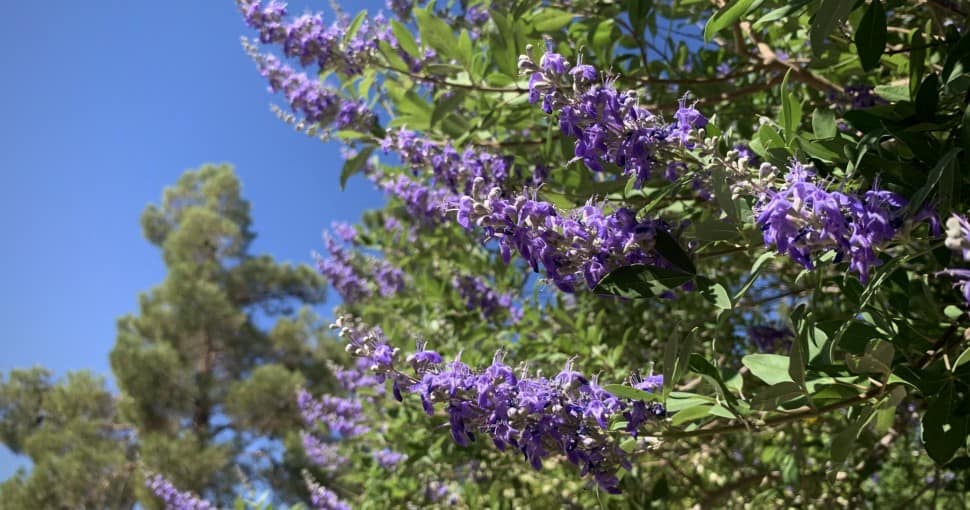There are many types of crepe myrtle that range from bush to tree, producing colorful and long-lasting flowers. They originate from various parts of Asia, but they’ve become a staple of the American South. However, some people don’t live in the right climate for the Crepe Myrtle or desire a native tree. Thus, we’ve been looking at alternatives with similarities.
Contents
Crepe Myrtle is a hardy tree that deer mostly ignore, with attractive bark and showy flowers. However, they are difficult to near impossible to grow outside their preferred warmer climates, such as the American South. Thus, if you like the Crepe Myrtle but can’t grow them in your area, some of our suggestions might be the perfect Crepe Myrtle alternative for you.
There are similar trees to the Crepe Myrtle, including the dogwood, both American varieties and the Kousa. Another attractive alternative is the Prairifire Flowering Crabapple.
1. Dogwood
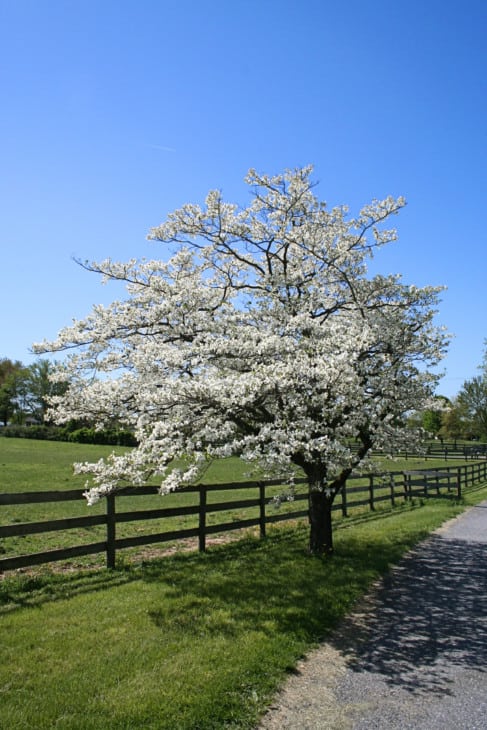
The flowering dogwood produces pink or white flowers and has been grown successfully as far north as Maine. Unlike the Crepe Myrtle, it isn’t drought resistant. But it can handle frost and some snow. The chill is only a problem if temperatures consistently drop below -15 F (-26C).
Like the Crepe Myrtle, the dogwood varieties range from bush to tree. After its flowers disappear for the year, the dogwood produces berries that feed deer, squirrels, and no fewer than 28 bird species.
Some people are shy of planting the flowering dogwood due to the horrible fungus threatening most native North American varieties. However, if you are happy to plant a non-native species, there is also the Kousa dogwood.
The Kousa also produces flowers, often with a red to a pinkish hue, and has a pretty, molting bark. Their fruits are different from the North American varieties, looking much like a raspberry but without the delicious flavor (leave them to the birds). But most crucial of all, the Kousa is not impacted by horrible fungus.
2. Prairifire Flowering Crabapple
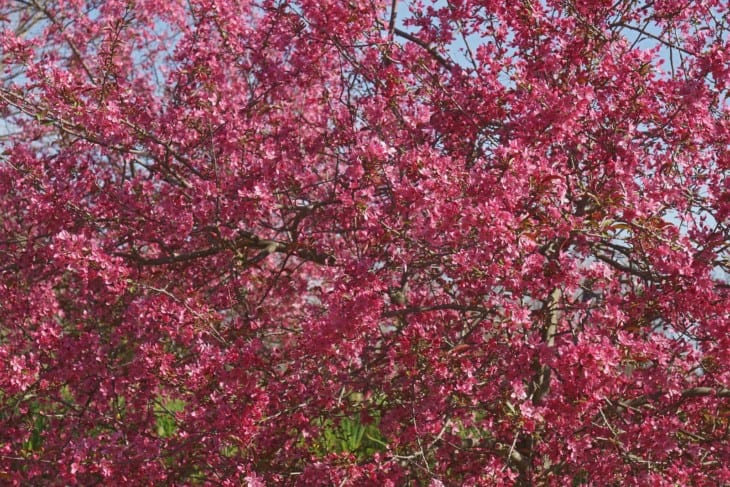
The Prairifire flowering Crabapple is one of the many crabapple varieties. It was introduced in 1982 by Dr. Daniel Dayton, who maintains that the misspelling of the Crabapple variety was intentional. All crabapple trees are part of the Rosaceae family, whose most famous members are roses.
Like roses, the prairifire is showy, bursting with long-lasting blooms each year. This tree is disease resistant and can be grown in Hardiness Zones 3-8. Like the Crepe Myrtle, it loves full sun, requiring a minimum of six hours of direct sunlight per day. It’s self-fertile and produces fruit that birds adore.
Another handy feature of the Prairifire, despite being gorgeous, is that it can be a pollinating partner to real apple trees. However, the color of your Prairifire flowers should be a match to your apple variety. Also, make sure the apple and Prairifire bloom in the same period.
3. Red Buckeye Tree
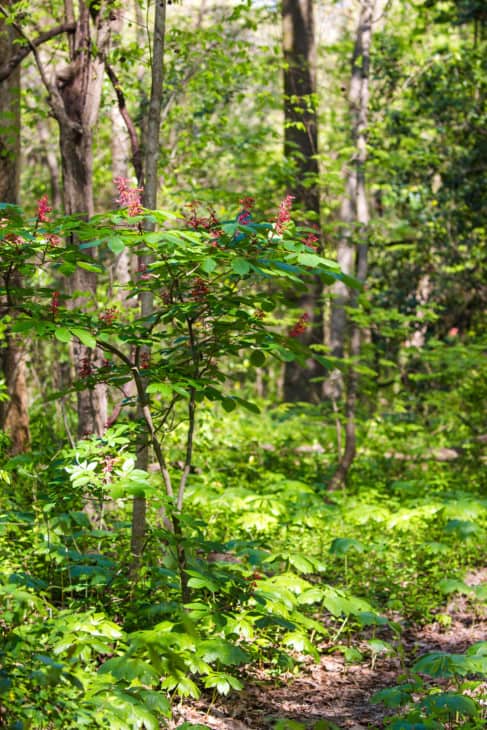
The red buckeye tree, with its eye-catching blooms, is one of the top thirty trees found in Arkansas. The red buckeye is native to the southern and eastern regions of the United States and, like the Crepe Myrtle, can be grown as a shrub or tree.
The red buckeye pops out drapey, red blooms April – May, hence its other name, the firecracker plant. It reaches a height of 10 – 20 feet (3 – 6 m), with a similar spread. However, unlike the crepe myrtle, it can handle partial shade, needing only 4 hours of direct sunlight.
The red buckeye is the perfect choice for those hoping to attract hummingbirds and butterflies to their properties. Its seeds, the buckeyes, also attract animals, such as the fox squirrel.
4. Chaste Tree
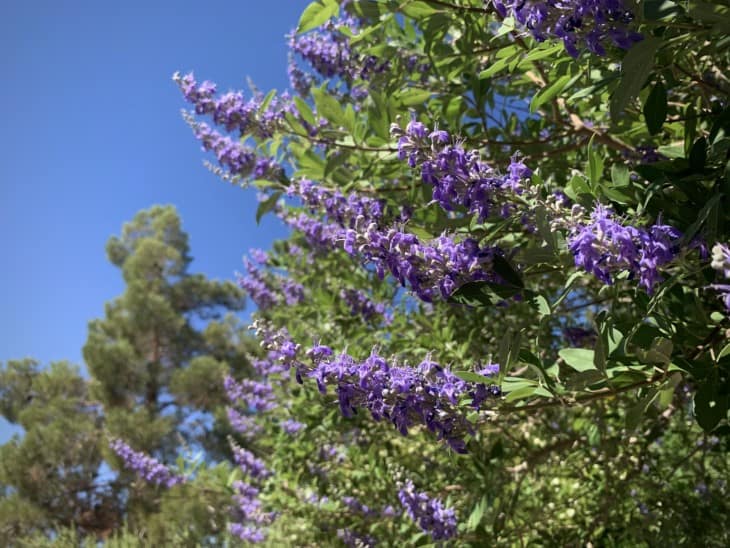
The chaste tree looks like a violet flower-producing Crepe myrtle. The chaste tree hails from China but has been cultivated in the United States since 1670. Like the Crepe myrtle, the chaste is grown as a shrub or a tree, reading 15 – 20 feet (5 – 6 m). It also requires full sun.
The chaste tree is also a popular alternative for lilacs, as the flowers can’t withstand hot temperatures. Its flowers attract butterflies and bees, but its seeds are generally ignored.
However, most gardeners remove the flowers before they go to seed to extend the flowering season of the tree.
While the chaste tree has no proven medical benefits, its dark fruit does contain iridoids, flavonoids, progestins, and its flowers can be made into an essential oil. Thus, parts of the chase tree have been used to manage endocrine problems, ease menstrual pains, and help regulate menstrual cycles.
5. Western Redbud
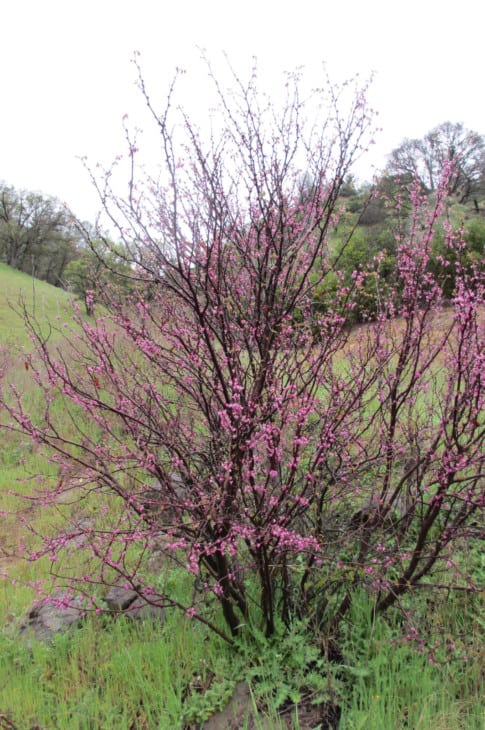
The purple-hued Western redbud produces flowers that look like a cross between a cherry blossom tree and the crepe myrtle. These gorgeous magenta blooms tempt hummingbirds, butterflies, and bees to their branches and surrounding gardens. Once the flowers are shed for the year, out come purple-brown seed pods, resembling a second bloom.
The Western redbud loves full sun but can happily grow in partial shade. It reaches 10 – 15 feet high (3 – 4.5 m) and is native to the North American regions of Arizona, California, and Utah. It is drought and deer tolerant and resistant to pests and diseases. With the right kind of pruning, it can also be used to create a shrub border to properties.
6. Fringe Tree
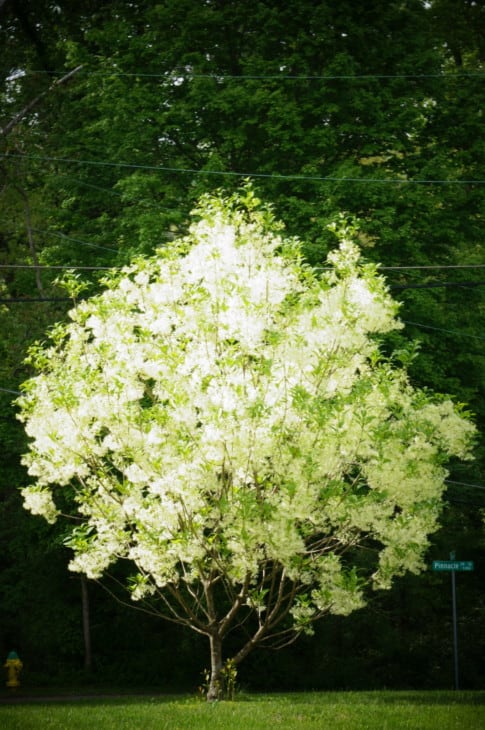
The fringe tree is native to North America and can live as high north as Canada and as far south as the Gulf coast. This unusual relative of the olive has white, lacy blooms that create a cloud of fragrance that lasts from late spring through early summer. It is incredibly hardy, tolerating a bit of drought, air pollution, range of weather, and has no significant pests.
The tree reaches 12 – 20 feet high (3.5 – 6 m) comes in male and female forms. The “boys,” like the peacock, produce the larger, more flamboyant flowers. The “girls” produce a Rochelle grape-hued fruit that attracts a plethora of birds. Thus, you’ll win either way: prettier flowers or gorgeous birds.

